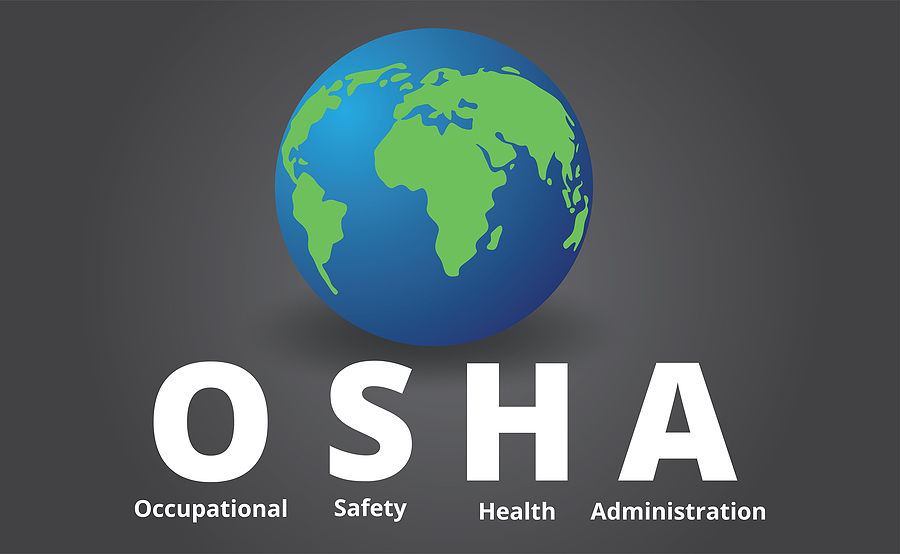The Scoop On Top OSHA Matters For 2022

We live in a different world today, with COVID-19 as a part of our planet now, it’s created an enormous upheaval for both the economy and the legal compliance world. Even the most conscientious and attentive employer has been overwhelmed by the complexity of rules and regulations that the pandemic has caused. While we’ve welcomed the arrival of COVID-19 vaccines, the accompanying OSHA vaccine mandate has added even more to the employer’s compliance burden.
While OSHA are busy implementing its testing/vaccine mandate, there are other significant matter in the pipeline that employers in the construction industry need to be aware of. These include several national and regional emphasis programs and new rule drafting, which illustrate the current OSHA priorities.
1. The Vaccine Mandate
OSHA issued an emergency temporary standard implementing a mandate for all employers with more than 100 employees following a directive from President Biden in October 2021. The mandate requires that the employees of these employers be vaccinated for COVID-19, or to submit to regular testing. OSHA have also expressed an interest in issuing a permanent standard, and possibly expanding this to include smaller employers.
Emergency temporary standards have an ongoing and long history within the OSHA Act, extending back as far as the earliest established standards created when the agency was created by the 1970 statute. As the court process is undertaken, it appears the success of the federal government in defending the standard will rely heavily on whether OSHA has done its homework in justifying the skipping of the usual regulatory process.
While there remains uncertainty as to the further implementation of the standard, employers would be advised to – in conjunction with employment counsel – develop compliance policies. OSHA appears to be poised to aggressively enforce the standard, which could entail significant penalties. While 22 states have federally approved the State-operated OSHA programs, they are also under a legal obligation to implement standards that are at least as stringent as the Federal standard. OSHA also has the authority to withdraw approval of State programs that are non-compliant.
2. Heat Stress Emphasis Program and New Standard
Within the last decade, at least 384 workers have died from job-related head stress. Acting OSHA Director James Frederick has said that current administration has made heat safety a priority.
OSHA initiated enhanced measures to protect workers from hot environments to reduce ambient heat exposure on September 21, 2021. Based on a long-standing emphasis program developed in OSHA’s Region VI (Texas and continuous states), OSHA announced that it would be developing a national emphasis program. This program aims to prioritize inspections of exposure to heat-related hazards. The rulemaking process to develop workplace heat standards has also begun, based on the guidance given from Region VI. OSHA is also forming a National Advisory Committee on Heat Injury and Illness Prevention, in order to better identify the challenges that impact worker safety.
There has now been an intervention and enforcement initiative implemented to protect workers from heat-related illnesses and death while working in hazardous environments. This includes prioritizing activities that occur when the heat index exceeds 80 degrees Fahrenheit. OSHA’s Area Directors have been directed to institute the following measures:
- Prioritizing inspections of heat-related complaints, employee-reported illnesses and referrals, initiating an onsite investigation where this is possible.
- Instruct compliance safety and health officers to implement interventions (for example, providing wallet cards, training and heat posters). Further, to open inspections when employees are observed performing strenuous activities in hot conditions.
- Addressing heat-related hazards by expanding other inspections where worksite conditions or other evidence indicates potential hazards.
A significant step was taken by OSHA toward adopting a federal heat standard in October 2021. They issued an Advance Notice of Proposed Rulemaking on heat injury and illness prevention in both outdoor and indoor work settings.
3. Other OSHA National Emphasis Programs That Impact the Construction Industry
The other OSHA National Emphasis Programs that affect the construction industry include:
- A new program implemented in Summer 2021; communicating OSHA Fatality Inspection Procedures to Victim’s Family (CPL 02-00-153)
- Combustible Dust (CPL 03-00-008), which is a long standing program designed to abate combustible dust hazards, including explosion prevention and mitigation controls
- Lead Exposure (CPL 03-00-009) This is another long standing program to create a system for measuring lead exposure during inspections
- Trenching and Excavation (CPL 02-00-161) placing emphasis on eliminating or reducing workplace hazards involving trenching and excavation.
4. Regional Emphasis Programs
Each of OSHA’s 10 regions may have their own emphasis programs that are specific to their area, in addition to the national emphasis programs. Work in the construction industry could be significantly impacted by several of these regional emphasis programs (REPs):
- Seven of OSHA’s 10 regions operate a REP regarding noise hazards in the workplace. This includes the entire country east of the Mississippi and the Pacific Northwest.
- All federal OSHA regions except for the Kansas City region and the South Pacific islands are paying particular attention to fall hazards.
- New England, Pacific Northwest, and Texas (and contiguous states) regions (I, VI and X) are paying special attention to cranes used in construction.
- Regions stretching from New York south to Virginia and west to Minnesota (II, III and V) have demolition as the subject of their REPs. Nebraska and Kansas also have emphasis programs – following severe weather events – on commercial and residential construction.
- Rocky Mountain region VIII places emphasis on asbestos abatement.
- Heavy bridge and highway construction are subject to a REP in New York, New Jersey, Puerto Rico, and the Virgin Islands, as are construction worksites in general.
A change of tone within federal agencies always appears with changing administrations. The Biden administration is expected to continue emphasizing working cooperatively with employers. But construction employers should also expect the increasing number of guidelines and regulations to be vigorously enforced.
